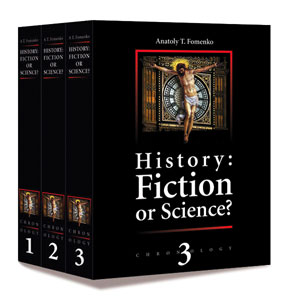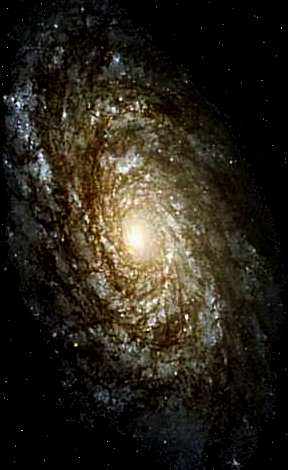|
Astrology is certainly one of the most ancient philosophies still in existence in China. Some estimate it to be more than 3,000 years old but recent study of more esoteric beliefs place it further back into the clouded past of human history. In ancient China, and up until today Astrology has been used to predict what happens to countries, the outcome of wars, economic trends and much more.
Chinese Astrology is organized according to 12 Animals Signs. One Chinese legend attributes the creation of the animal signs to the semi-mythical Yellow Emperor in 2637 B.C. According to another legend, the Lord Buddha summoned all the animals to come to him before he departed from Earth. Only 12 animals came to bid him farewell. As a reward he named a year after each other one in the order that they arrived. First came the Rat, then the Ox, the Tiger, Rabbit, Dragon, Snake, Horse, Sheep, Monkey, Rooster, Dog and Pig. Thus we have 12 signs today.
The constellations are totally imaginary things that poets, farmers and astronomers have made up over the past 6,000 years (and probably even more!). The real purpose for the constellations is to help us tell which stars are which, nothing more. On a really dark night, you can see about 1000 to 1500 stars. Trying to tell which is which is hard. The constellations help by breaking up the sky into more managable bits. They are used as mnemonics, or memory aids. For example, if you spot three bright stars in a row in the winter evening, you might realize, "Oh! That's part of Orion!" Suddenly, the rest of the constellation falls into place and you can declare: "There's Betelgeuse in Orion's left shoulder and Rigel is his foot." And once you recognize Orion, you can remember that Orion's Hunting Dogs are always nearby. Then you might recognize the two bright stars in the upper and lower left of the photograph as Procyon in Canis Minor and Sirius in Canis Major, respectively.
Around the world, farmers know that for most crops, you plant in the spring and harvest in the fall. But in some regions, there is not much differentiation between the seasons. Since different constellations are visible at different times of the year, you can use them to tell what month it is. For example, Scorpius is only visible in the northern hemisphere's evening sky in the summer. Some historians suspect that many of the myths associated with the constellations were invented to help the farmers remember them. When they saw certain constellations, they would know it was time to begin the planting or the reaping.
This dependence on the sky became a strong part of many cultures. Perhaps there is something about the mystery of the night sky that makes people want to tell stories about the constellations. The picture at the left is an ornate star chart printed in 1835. Like the others, it shows the great hunter Orion. In this one, he is holding a lion's head instead of his traditional bow or shield. He has an eager look in his eye as he stalks Taurus, the Bull. Behind him, his faithful dog, Canis Major, is chasing Lepus, the Hare. Compare this picture to the photo near the top of the page. They are at about the same scale and they show the same stars.
The constellations have changed over time. In our modern world, many of the constellations have been redefined so now every star in the sky is in exactly one constellation. In 1929, the International Astronomical Union adopted official constellation boundaries that defined the 88 official constellations that exist today.
Mysterious celestial objects visible in the sky have always fascinated and inspired humanity. Even today, in this age of super rationality and high tech, in spite of its evident groundlessness, astrology seems to preoccupy many average people, who strongly believe in the supernatural influence of the planetary movements on human lives. Since ancient times, the sky has been believed to be a gate to the Heavens. The changing positions of the planets, the moon and the sun were seen as expressions of a divine power influencing human existence on Earth. Great importance was attributed to all celestial phenomena, in particular to horoscopes. Regardless of all the imaginary significance attributed to horoscopes, we should remember that they are also a record of dates written by means of a cosmic calendar. Today, we can decode ancient horoscopes and, using mathematical computations, discover the dates that were commemorated.
But what exactly is a horoscope? When we look at the sky at night, we get the impression the Earth is surrounded by an enormous sphere filled with stars. Although this celestial sphere seems to be revolving slowly around us (an illusion caused by the daily revolution of the Earth), all the stars always appear in the same configurations (called constellations), at the same fixed positions on the celestial sphere. However, there are also other celestial objects, which seem to be "traveling" across the celestial sphere. The moon is one of them, but there are also five planets that can be observed with the naked eye. These planets are Jupiter, Saturn, Mars, Venus, and Mercury. Of course, although invisible at night, the sun is also moving across the sky.
The planets, including the moon and sun, were in old times called traveling stars, but today we simply call them the seven planets of antiquity. It appears to an Earth-based observer that in the course of one year, the sun completes a full revolution around a large circle on the celestial sphere. This circle is called the ecliptic. The planets and the moon are always found on the sky within a narrow belt, 18o wide, centered on the ecliptic, called the zodiac. The area around it is called the zodiacal belt. The zodiacal belt is a celestial highway where the movement of all the planets, the sun and the moon takes place when observed from the Earth. Twelve zodiac constellations are placed along the ecliptic traveling the zodiac belt. Their familiar names are Aries, Taurus, Gemini, Cancer, Leo, Virgo, Libra, Scorpio, Sagittarius, Capricorn, Aquarius, and Pisces.
There are many ancient representations of zodiacs containing symbolic representations of horoscopes. In particular, some Egyptian zodiacs, which use specific ancient symbols to illustrate astronomical objects, can be analyzed. It is difficult to disagree that this is an exciting idea which could lead us to the exact dates which correspond to ancient Egyptian history! Let me include some examples of Egyptian zodiacs. All of these zodiacs are discussed in detail in an upcoming book entirely devoted to the astronomical dating of the ancient Egyptian zodiacs.2 Figure 2 shows an Egyptian zodiac found on the ceiling in an ancient Egyptian temple in Denderah. It is called the Round Denderah zodiac.
Discover Yourself!
Sure, it's neat to know which famous people have the same birthday you do, but wouldn't it be fascinating to know what else you have in common with these celebrities? The Secret Language of Birthdays will show you this and much more. Through "personology" (a combination of characteristics influenced by sun sign, season, and day of the year) and an analysis of several thousand character profiles, authors Gary Goldschneider and Joost Elfers have pinned down the traits most common to people born on the same day.
Rather than taking a strictly astrological approach--how the planets, sun, and stars affect a person's behavior--the authors compare the commonalties of people who share birthdays, and piece together a personality for each day of the year, effectively slicing through geographical and cultural differences, while avoiding the one-size-fits-all trap of newspaper sun-sign horoscopes. Some readers may find the authors' strict use of the Gregorian calendar limiting, but conversion to other time-keeping systems is fairly simple (the authors make note of this problem and contend that a day is a day, whether someone names it October 21 or 1 Rajab). Goldschneider and Elfers focus on a model of the year as a wheel spinning in a recurring circle of patterns, an idea that reaches back far beyond the linear calendars we use today. Each birthday discussed includes important numbers, tarot cards, and a dose of psychology, so while you learn a little about the other people with your birthday, you may even discover something new about yourself.
All Around the Zodiac: Exploring Astrology's Twelve Signs

Bil Tierney is one of the very best teachers in the world of astrology. "All Around the Zodiac" follows up his three previous books on the outer planets with clear, in-depth and highly readable descriptions of the twelve signs of the Zodiac. Bil's obvious experience shows on every page, making the book perfect for astrology students, beginners and pros. I've been practicing professionally for almost 30 years and I'm still amazed by Bil's ability to bring new light to this ancient subject. I highly recommend this book to anyone who wants to know more about astrology, themselves and the workings of the human personality.
Skymates: Love, Sex and Evolutionary Astrology
Romeo and Juliet Star-Crossed No More!

If Shakespeare's lovers had had this book, things might not have ended so badly...
"Skymates" doesn't tell you that if you're a Cancer, you should never marry a Scorpio. The Forrests respect our freedom to choose our mates; they use astrology - with humor, intelligence, and compassion - to help us make the best of the relationships we have.
Early in the book, Chapter Two offers a quick overview of the building blocks of astrolgy: signs, planets and houses - this way, one doesn't have to be a certified professional astrologer to use "Skymates."
The Forrests then cover in-depth the houses that make up the Arc of Intimacy and detail the significance of having planets in those houses.
After that, they move into the synastry portion of the book, touching briefly but not boringly on the mathematics of calculating aspects, then what the various major aspects mean: conjunctions, oppositions, trines and squares. Configurations are covered in a sizeable "cookbook" section where couples can look up their charts: Your Mars is square your partner's Mars - what does that mean? Look it up and find out!
Anyone interested in improving his or her own relationships should pick up a copy of this book.
Karma Cards: A New Age Guide to Your Future Through Astrology
 Perceptive guide to the future that is guaranteed to entertain, amuse, and enlighten. Shuffle the cards, pick one from each of three decks representing the Planets, Signs, and Houses, place them side by side, and read across to get answers to questions about future love, career, and financial moves. 36 shrinkwrapped cards with comprehensive instruction booklet.
Perceptive guide to the future that is guaranteed to entertain, amuse, and enlighten. Shuffle the cards, pick one from each of three decks representing the Planets, Signs, and Houses, place them side by side, and read across to get answers to questions about future love, career, and financial moves. 36 shrinkwrapped cards with comprehensive instruction booklet.
|









